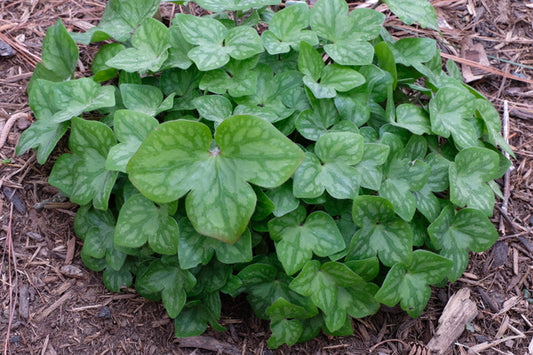The genus Hepatica contains just 7 species, native to countries in the northern hemisphere. Hepatica is a member of the buttercup family (Ranunculaceae) which means that its botanical cousins include anemone, clematis and helleborus.
-
 Sold out
Sold outHepatica acutiloba 'Monroe Shocks'
Item #: 11737
Zones: 6a to 9b, possibly much colder
Dormancy: Evergreen
Height: 4" tall
Culture: Light Shade
Origin: United States
Pot Size: 2.5" pot (7.9 fl. oz/233 ml)
Regular price $24.00Regular priceUnit price per
More Information About Hepatica
The common names liverleaf and liverwort should not make you confuse hepatica, a flowering plant (angiosperm), with the moss-like genus Marchantia that shares this common name. Both hepatica and marchantia got the name liverwort from medieval herbalists who used the "Doctrine of Signatures" to assign plants to medicinal uses based on their outward appearance.
Hepatica leaves have 3 lobes, like the human liver, and so were prescribed for liver ailments. Hepatica species are small herbaceous plants with charming blooms in purple, blue, pink or white. Established plants produce clusters of colorful flowers in the very early spring, often before the leaves come out.
A rich, moist woodland site is best for hepatica, but you'll need to place them someplace where they will not be covered by larger plants. Hepatica prefers part shade and humus-rich, average moisture soils, even in winter. Hepatica leaves are evergreen and turn maroon during winter. When you are ready to buy hepatica for your perennial garden, we hope you'll check out our online offering of hepatica for sale.



